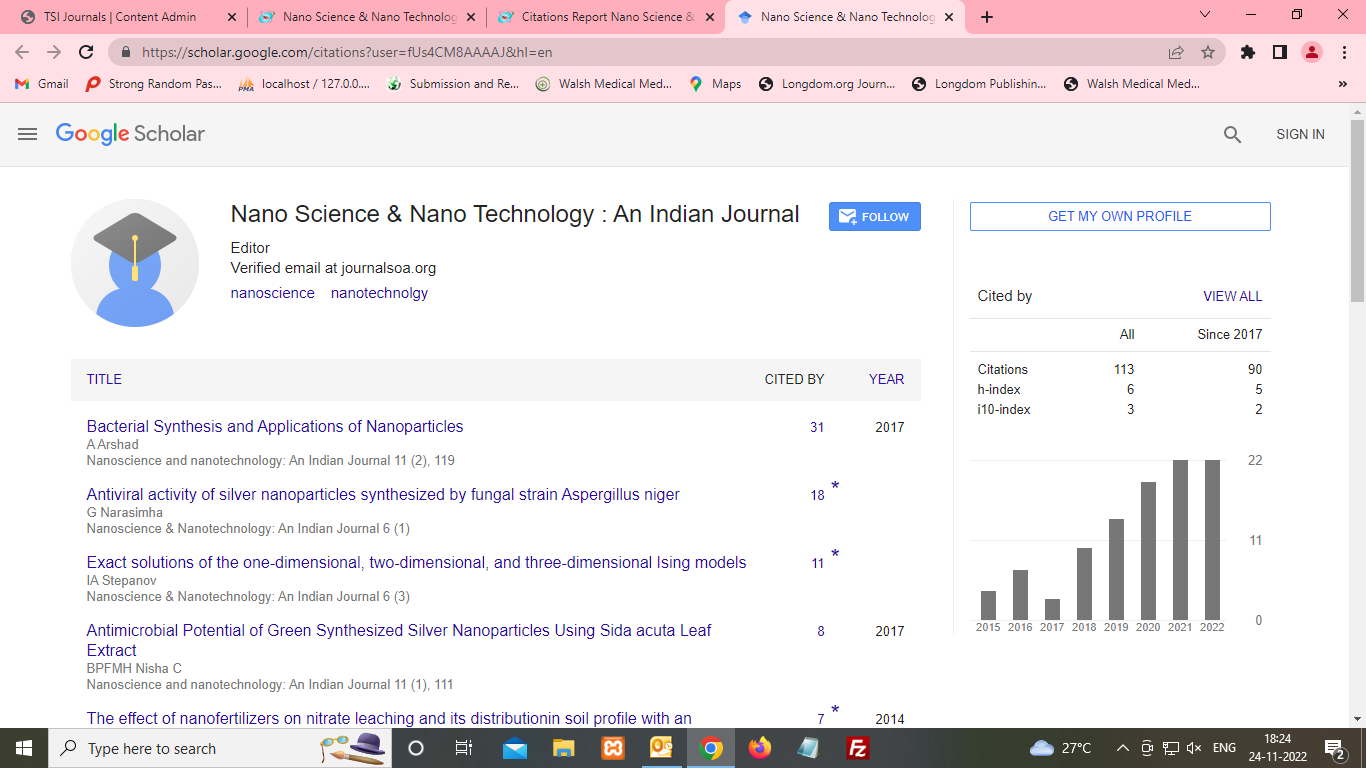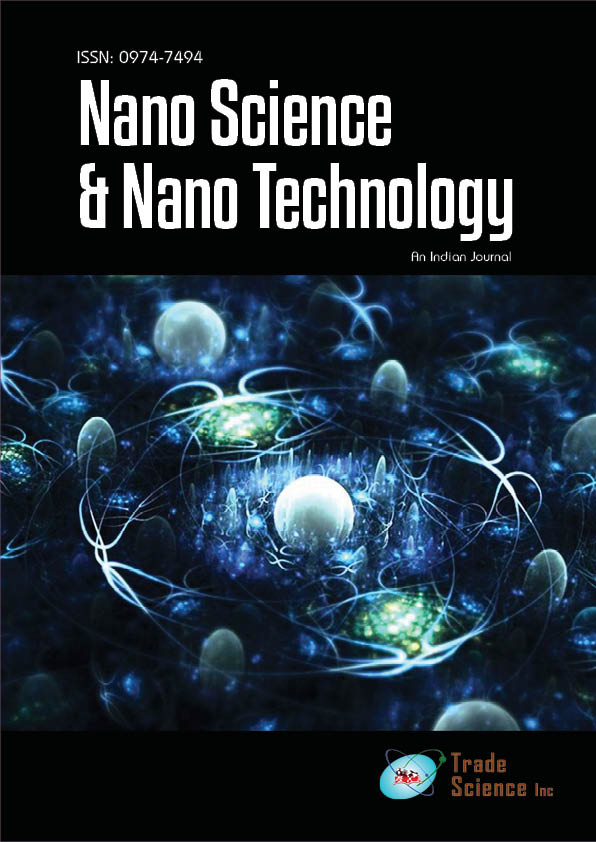Short commentary
, Volume: 16( 5) DOI: doi: 10.37532/ 0974-7494.2022.16(5).162Rechargeable zinc air batteries' nano-electric catalysts
- *Correspondence:
- Christopher Adams Editorial office, Nanoscience & Nanotechnology: An Indian Journal, UK, E-mail: adams@nano.com
Received: Sep 3, 2022, Manuscript No. tsnsnt-22-80166; Editor assigned: Sep 5, 2022, PreQC No. tsnsnt-22-80166 (PQ); Reviewed: Sep 17, 2022, QC No. tsnsnt-22-80166 (Q); Revised: Sep 20, 2022, Manuscript No. tsnsnt-22-80166 (R); Published: Sep 28 2022, doi: 10.37532/ 0974-7494.2022.16(5).162
Citation: Ashraf G. Real Time Based RT-PCR Detection of DUF538 Gene Expression in Drought-Challenged Celosia. Biochem Mol Biol 2016; 2(1): 101.
Abstract
Although it remains a difficult task, creating bifunctional oxygen reduction and evolution reaction (ORR/OER) electro catalysts without precious metals is crucial for many important energy conversion and storage systems. We systematically created the Fe-Co-Ni trimetallic Nano alloys enclosed in nitrogen-doped carbon nanotube@nanosheet frameworks (FeCoNi-NC) for use as efficient bifunctional ORR/OER electro catalysts in this study
Introduction
Although it remains a difficult task, creating bifunctional oxygen reduction and evolution reaction (ORR/OER) electro catalysts without precious metals is crucial for many important energy conversion and storage systems. We systematically created the Fe-CoNi trimetallic Nano alloys enclosed in nitrogen-doped carbon nanotube@nanosheet frameworks (FeCoNi-NC) for use as efficient bifunctional ORR/OER electro catalysts in this study.
Alternatives to the burning of fossil fuels for energy conversion and storage include electrochemical devices like fuel cells, batteries, and supercapacitors. The rechargeable zinc-air battery, one of many promising energy storage technologies, has many appealing qualities, including a high energy density, an economical and ecologically friendly design, and few operating dangers. However, one of the biggest barriers to commercialization of rechargeable zinc-air batteries is the slow kinetics of the oxygen reduction reaction (ORR) and the oxygen evolution reaction (OER). In order to effectively promote both ORR and OER processes, it is crucial to design more unique, highly efficient bifunctional nano-electro catalysts. It is possible to mechanically recharge zincair batteries by swapping out their zinc anodes (39% of the battery's weight). They contain electrolytes of potassium hydroxide (28%) and carbon (air) cathodes (12%), respectively [24]. Recharging is carried out in a facility where used anodes are removed from the vehicles and replaced with new ones.
Transition-metal-based materials (oxides, chalcogenides, nitrides, and carbides), heteroatom-doped carbon nanomaterials, and hybrid materials made of the first two have all made significant strides in the development of bifunctional catalysts recently. Utilizing nanostructured carbon with a high surface area to aid in the dispersion of electrolyte and speed up the charge transport of metal oxides, the hybrid materials have been shown to synergistically increase ORR and OER activities. The oxygen electro catalyst function of the carbon materials can increase ORR activity, while OER is facilitated by the metal oxide.
Basically, single metal oxide, spinel-type metal oxide, and perovskite-type metal oxide hybridised with carbon materials are the three types of hybrid catalysts, as previously reported. Researchers have paid more attention to spinel and carbon hybrid materials, such as CoMnO, MnCoO, FeCoO, NiCoO, and MnFeO, because the high OER activity of spinel is complemented by the high ORRactivity of carbon materials. As an illustration, Lee and colleagues reported the use of spinel NiCo2O4 crystals coupled with graphene sheets (NiCo2O4-G) for both ORR and OER.
FeCoNi-logical NC's structural design offers hierarchical porosity in addition to a significantly larger effective electrochemical specific area for exposing a lot of active sites and improving mass-transfer efficiency to the ORR/OER. Fe-Co-Ni Nano alloys interacting with pyridinic nitrogen-rich carbon in a synergistic manner enhanced the adsorption/desorption free energies of oxygen intermediates, greatly increasing the intrinsic ORR/OER activity, according to experimental findings and theoretical calculations.
It has been shown that the NiCo2O4-G materials greatly enhance the ORR and OER performances of Co3O4-G by incorporating Ni atoms into the spinel lattice. Due to Ni integration into the octahedral sites of the spinel crystal structure, the electrical conductivity was enhanced, and new active sites were created. However, the composition of spinel oxides is adjusted with various cations based on the particular activity required as well as material cost constraints. Prabu et al., similarity.
Conclusion
In conclusion, the unique coupling between the metal oxide and carbon species is responsible for the hybrid materials' synergistic action. This coupling also increases electrochemical durability by lowering over potentials. However, the precise and unambiguous mechanism underlying the hybrid materials' synergistic bi-functional activity is not yet known. In order to further optimise the design of hybrid catalysts and accelerate the commercialization of rechargeable zinc-air batteries, the next research path should focus on the mechanism of hybrid materials reaction

